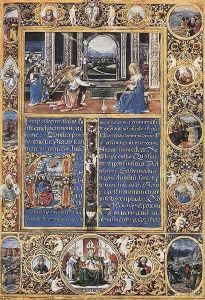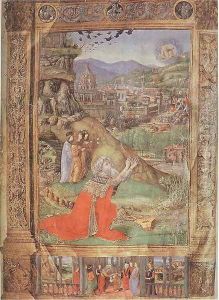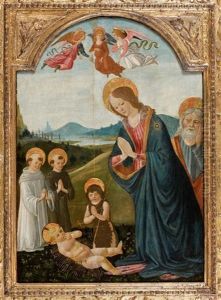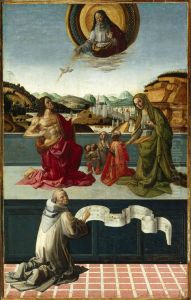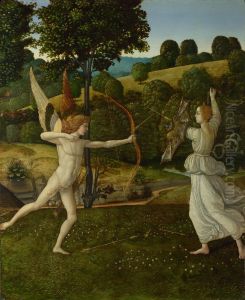Gherardo di Giovanni del Fora Paintings
Gherardo di Giovanni del Fora was a notable figure in the world of Renaissance art, born in 1444 in Florence, Italy. He emerged from a period deeply enriched by the revival of interest in the classical past, which significantly influenced the arts, philosophy, and sciences. Gherardo was part of this vibrant cultural milieu, contributing to the artistic landscape with his unique blend of traditional Florentine techniques and the innovative spirit of the Renaissance.
His works are characterized by meticulous attention to detail and a deep appreciation for the natural world, aspects that were highly regarded in the Renaissance period. Gherardo specialized in manuscript illumination, a field that allowed him to express his skills in combining intricate designs with vivid storytelling. His illuminations often featured elaborate borders filled with flora, fauna, and figurative scenes, surrounding texts of religious and classical nature. This skill set made him a sought-after artist among the Florentine elite, who desired luxurious manuscripts for their personal libraries.
Beyond manuscript illumination, Gherardo also contributed to the panel painting and fresco traditions, though his works in these mediums are less well-documented. His style in these areas continued to reflect his keen eye for detail and his ability to weave complex narratives into his compositions. Despite the scarcity of surviving works, those attributed to him demonstrate a deep understanding of human anatomy, perspective, and the use of color to evoke emotional depth.
Gherardo's career was significantly influenced by the Medici family, Florence's leading patrons of the arts. Through their patronage, he gained access to an elite circle of intellectuals and artists, including figures such as Sandro Botticelli and Domenico Ghirlandaio, which likely influenced his artistic development. However, unlike some of his contemporaries who achieved widespread fame, Gherardo's reputation was primarily confined to his expertise in manuscript illumination.
Gherardo di Giovanni del Fora passed away in 1497, leaving behind a legacy that, while not as prominent as some of his contemporaries, remains an important part of the tapestry of Renaissance art. His dedication to his craft and his ability to blend traditional techniques with the innovative spirit of his time make him a figure worth remembering in the history of art. Today, his remaining works offer a window into the rich cultural and artistic landscape of 15th-century Florence, reflecting the intricate beauty and intellectual depth that defined the Renaissance.
